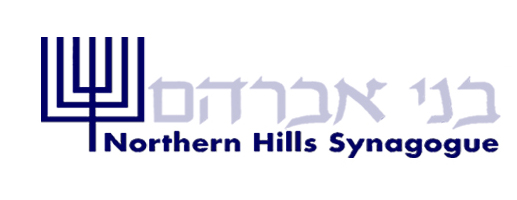Among "Bible stories", the story of Jonah and the whale is one of the most popular. As a public relations expert once told a group of rabbis, of which I was one, stories involving animals get attention. Of course, as you all know, the creature that swallowed Jonah was not a whale, a giant marine mammal, but rather a dag gadol, a big fish, of undetermined species. I trust that you also understand that the question of whether or not there was a man named Jonah who was cast overboard from a ship during a storm, swallowed by a big fish, and then spit out alive three days later, is irrelevant.
Indeed, already in the 11th century, Rabbi Abraham ibn Ezra wrote, in his commentary on the book, that the whole story took place in a vision. What is important about the story is the moral and religious lesson which we are to draw from it. Most often, that lesson is presented as a universal one, that God is concerned, not only about Israel, but even about the people of Nineveh, enemies of the Jewish people. Some scholars hold that the main theme of the book is the power of repentance, that Nineveh is just an example of an ancient city, and that the point is that anyone, no matter how far from God he may seem to be, may still be saved through repentance.
I would like to suggest that, just as the value of the story of Jonah does not depend on the actuality of the fish story, so the significance of other parts of the Tanakh does not depend on the historicity of their narratives. Let me now make two points about how not to read the Bible, and then I shall make three points about how to read it.
We should not read the Bible in order to find out what happened in the ancient Middle East. I have already spoken about Jonah and the big fish. Similarly, there is ample warrant in Judaism for regarding the stories at the very beginning of Genesis, about the Creation of the world and about Adam and Eve, as myths, that is, as presentations in narrative form of religious and philosophical ideas. This approach is not specifically modern. Rabbi Abraham ibn Ezra, again, wrote in his commentary on Bereshit, that the Torah did not intend to convey the exact order of Creation, and Maimonides, in the Guide of the Perplexed, wrote that, even though he believed that the Creation did happen in six days as it was presented in Bereshit, it would be possible to interpret the passage in other ways if necessary. The same applies to other narratives in the Tanakh; they are not necessarily historically accurate, but that doesn’t matter. I do not mean to say that they are all totally made up. Certainly, there is a core of historical truth in the Biblical narrative, but, if we really want to know what happened, then we have to look also at archaeology, non-Biblical texts, etc., and the resulting picture will be quite different from that which a naive reading of the Bible would yield.
Second, we should not read the Bible in order to find out how to live our lives. I cannot repeat often enough that Judaism is based, not on the Bible, but on the Torah shebikh’tav (the Written Torah) and the Torah sheb’al peh (the Oral Teaching) combined. In fact, it is the Torah sheb’al peh, the Talmudic and rabbinic literature, which in fact prevails, since it has the last word. People sometimes think that really Orthodox Jews live strictly by the Bible. In fact, someone who insisted on living strictly by the Bible would be out of Judaism. On the one hand, important Jewish practices like Hanukkah, lighting Shabbat candles, and keeping separate dishes for meat and dairy are not found in the Bible. On the other hand, some Biblical rules like "an eye for an eye and a tooth for a tooth" are not part of Jewish teaching, and they have never been part of Jewish teaching. within historical times.
Now, let me give you the positive side. We can read the Tanakh for edification. The gates of interpretation are wide open, and the only criterion of a good interpretation is its intrinsic cogency. Even practicing Jews can suggest interpretations which deviate from the Jewish traditional understanding, as long as they follow the tradition in practice. Thus, Rabbi Shmuel ben Meir, the Rashbam, in the 12th century, suggested that the verses which are understood as containing the commandment of tefillin should be understood metaphorically, to say that the words of Torah should be as clear and present to us as if they were on our arms and right in front of our eyes. The Rashbam’s interpretation is all right, because, I am sure, he also lay tefillin every morning.
This reference to traditional practice leads me to my second positive point. We can read the Tanakh as a practical guide for life, as long as we read it as part of the ongoing Jewish tradition. There are many books, traditional and modern, which give the actual Jewish religious practice related to particular Biblical passages. Thus, when we read in the Bible, "an eye for an eye and a tooth for a tooth", we should also read that the normative Jewish understanding of that expression, as set out in the Talmud, Bava Kamma, is that it means appropriate monetary compensation. The Conservative Humash, which our congregation will soon acquire, includes a section giving all of those traditional practical interpretations, the halakha l’ma-aseh.
Third, we can read the Biblical narratives for their historical content if we read them critically. I often seem to be denigrating the historical value of the Biblical text, and if I seem to do so, it is because I am reacting against the literalism which seems so widespread among us. However, the Bible is probably the most important single source for ancient Israelite history. It is just that, if you are really doing history, then you have to look at other sources, too. We should read the Biblical narratives more, I would say, in order to make them part of our story, which is a component of the way in which we place ourselves in the world. In our Mahzor, there is a long selection, adapted from a piece by the late famous Rabbi Abba Hillel Silver. It begins with the words "I stood with Abraham", and it goes through all of Jewish history. We never read it at services, frankly, because I believe that a three page responsive reading would be deadly. However, it is a worthwhile piece to read to oneself. (It is on pages 317-319) Its point is that we can and ought to identify with the great figures and generations of the Jewish past, to make them and their experiences and their qualities parts of ourselves.
The early 20th century Jewish thinker Franz Rosenzweig once said that he regarded the story of Balaam’s talking donkey as a fable, except on the Shabbat when the story is read in the synagogue and the donkey speaks to him from out of the open Torah. Taking a cue from Rosenzweig, I would say that I regard the story of Jonah and the big fish, and many other Bible stories, as fables, myths, or legends, but Jonah’s message of God’s universal concern and the power of repentance, and the teachings of the rest of the Tanakh, are as real to me as anything can be.

